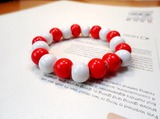
Student will use the code sheet to spell out their name. They will then use the appropriate bead for "0" and "1" to make the bracelet.
- Subject:
- Computing Systems
- Material Type:
- Activity/Lab
- Author:
- Jennifer Woodlief
- Date Added:
- 07/09/2022

Student will use the code sheet to spell out their name. They will then use the appropriate bead for "0" and "1" to make the bracelet.
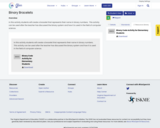
In this activity students will create a bracelet that represents their name in binary numbers. This activity can be used after the teacher has discussed the binary system and how it is used in the field of computer science.

This slideshow introduces students to counting in binary and contains a very short self-check to help gauge understanding.

This lesson is designed to engage students in a meaningful and fun coding experience. Students will experience binary code as they write their name using 0s and 1s in the binary code alphabet.

This is a power point lesson that goes through what binary numbers are and how to convert from binary to decimal and vice versa.

In this lesson, students will create a binary art representation of their names. This will reinforce the concept of using numbers to represent non-numeric ideas.
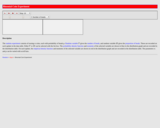
This resource consist of a Java applet and expository text. The applet simulates Bernoulli trials in terms of coin tosses. The random variables of interest are the number of heads and the proportion of heads. The number of coins and the probability of heads can be varied. The applet illustrates the law of large numbers and the central limit theorem.
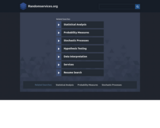
This resource consists of a Java applet and expository text. The applet simulates Bernoulli trials in terms of random points on a timeline. The random variables of interest are the number of successes and the proportion of successes. The number of trials and the probability of success can be varied. This applet illustrates the law of large numbers, the central limit theorem, and the binomial distribution.
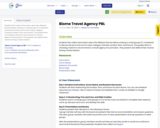
Students first collect information about the different biomes before working in small groups (2-3 students) to discuss the pros and cons for each category (climate, location, flora, and fauna). This guides them in choosing a biome to recommend to a travel agency for promotion. They present and defend their choices during a board session.
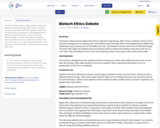
This lesson will be used to help students explore the bioethics of biotechnology. With a team, students choose a renewable alternative energy source such as cloning, stem cell research, DNA fingerprinting, or others and research the pros and cons of that biotechnology.
The team then splits into debate teams and draws straws to determine whether they are on the "pro" or "con" side. They will debate in front of the class allowing others in the class to learn about both sides.

Learn about migration, the seasonal movement of animals from one location to another. Join the Center staff and migratory bird experts as they explain why birds migrate, and the dangers that they may face along their journeys. Learn how to help migrating birds and why we should be concerned about more than just our own backyards.
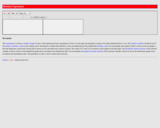
This resource consists of a Java applet and expository text. The applet is a simulation of the birthday experiment: a sample of size n is chose at random and with replacement from the first m positive integers. The random variable of interest is the number of distinct sample values. The event of interest is that all sample values are distinct.
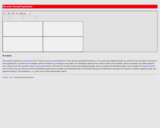
This resource consists of a Java applet and expository text. The applet simulates the bivariate normal distribution. The means are set at 0, but the standard deviations and the correlation can be varied. Simulated points from the distribution are shown as dots in a scatterplot.
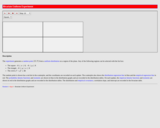
This resource consists of a Java applet and expository text. The Java applet illustrates the bivariate uniform distribution on three types of regions: a square, a circle, and a triangle. Simulated points from the distribution are shown as dots in a scatterplot.

Jackson Ward in Richmond, VA was one of the most active and well known centers of African American life in this country by 1920. Other examples of cities such as this one include Alexandria, VA and Church Street in Norfolk, VA. African Americans were able to create vibrant communities with businesses, churches, and entertainment venues despite the challenges they faced in this country.

To conclude any novel read in class or as a book report option, students will create a Bloom Ball book report. The twelve-sided structure will require students to answer questions connecting to the novel. Each face of the structure will ask a question that aligns with a particular level of Bloom’s Taxonomy.

Students will use primary sources to detect propaganda.

This is an introductory lesson for creating box plots.
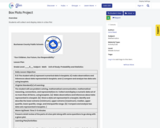
Students will collect and display data in a Box Plot
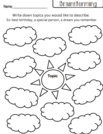
Graphic Organizer for Brainstorming